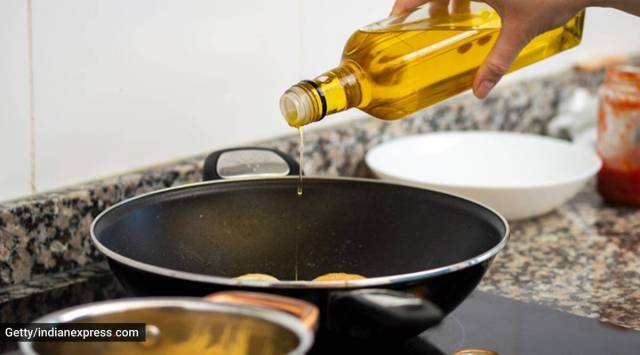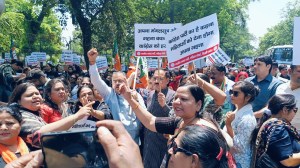- India
- International
Cooking oil prices likely to start cooling from Dec but not ‘dramatically’, says top officer
“Prices of soyabean oil and palm oil for December in the futures market are showing a marginally declining trend, which means we can expect it is not rising,” Sudhanshu Pandey, Secretary, Department of Food and Public Distribution, said.
 He also highlighted factors such as reduction in duty and facilitation on ports, which he said have contributed in controlling prices. (Photo: Getty/Thinkstock)
He also highlighted factors such as reduction in duty and facilitation on ports, which he said have contributed in controlling prices. (Photo: Getty/Thinkstock)Prices of edible oil, which have gone up between 20 and nearly 50 percentage points in the last one year, may not cool down “dramatically” but will start softening from December, according to a top officer of the Union Ministry of Consumer Affairs, Food and Public Distribution.
“Prices of soyabean oil and palm oil for December in the futures market are showing a marginally declining trend, which means we can expect it is not rising,” Sudhanshu Pandey, Secretary, Department of Food and Public Distribution, said.
“It may not cool down dramatically, but daam badhenge nahin; woh girenge hee (price will not rise, it will only come down),” he added.
Pandey said, “Soyabean crop will be harvested in the coming days, then there will be the Rabi mustard crop after four months…. So, hopefully, prices should remain under control.” Arrival of new crops and a declining trend in the international market will contribute in bringing down prices, he said.
Pointing out that India’s import-dependence on edible oil is 60 per cent at present, Pandey said, “If the international price is high, then the impact will get passed on. The silver lining is, if you compare international price hike of soyabean and palmolein, it has been in the range of 22 per cent and 18 per cent, respectively, last week. But the impact on the Indian market is less than 2 per cent.”

He also highlighted factors such as reduction in duty and facilitation on ports, which he said have contributed in controlling prices.
Asked whether the government plans to reduce the agri cess, levied on import of crude palm oil at 17.50 per cent, to give relief to consumers, Pandey said, “Agri cess is very important to support, in long run, for our own domestic production. This agri cess is going to fund the National Oilseed Mission.”
The officer said, “Whatever the government could do, it has done. It did reduce import duty on both palm as well as other (oil). So, to that extent, intervention was there and it is reflected,”
The average retail prices of six edible oils — groundnut, mustard, vanaspati, soya, sunflower, and palm oil — have increased in the range of 21 to 48 percentage points in the last one year, according to data available on the Department of Consumer Affairs portal as on September 3, 2021. It shows that even in the last one-month, average retail prices of different cooking oil have seen an increase.
Panday said one of the reasons for this increase is the rise in prices in the international market.
One factor leading to this rise in edible oil prices, “which is extremely important”, is excessive buying by China, Pandey said. “They have been stocking because [oilseed] crops were damaged in China due to drought and floods.”
Besides, Pandey said, “many countries, due to their international obligations, are pursuing very aggressively — like India is doing ethanol from sugarcane and maize, they are doing biofuel policy using their resources. So Malaysia and Indonesia are using palm oil for their biofuel policy. They are diverting palm oil for biofuel. Likewise, the US is diverting soyabean for biofuel…. These are the top two oils in terms of share in the Indian market — palm oil has about 30-31% (market share) and soya oil about 22%…. So, 50 per cent of consumption of edible oils in India comes from these two oils.”
Apr 24: Latest News
- 01
- 02
- 03
- 04
- 05








































